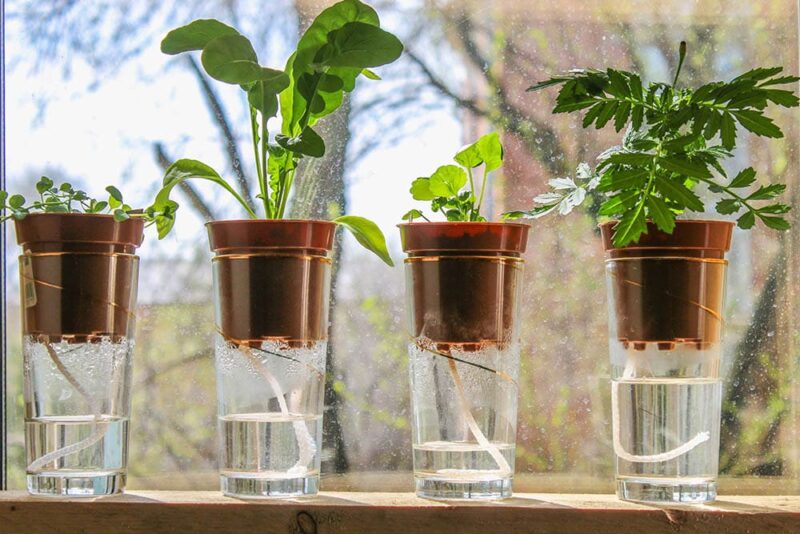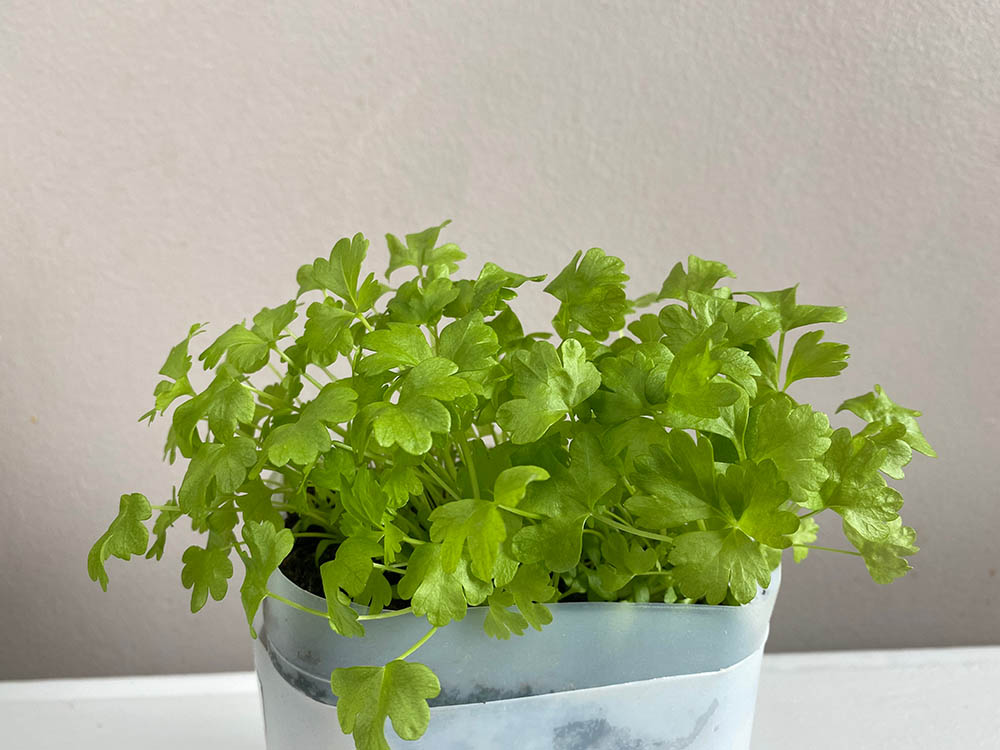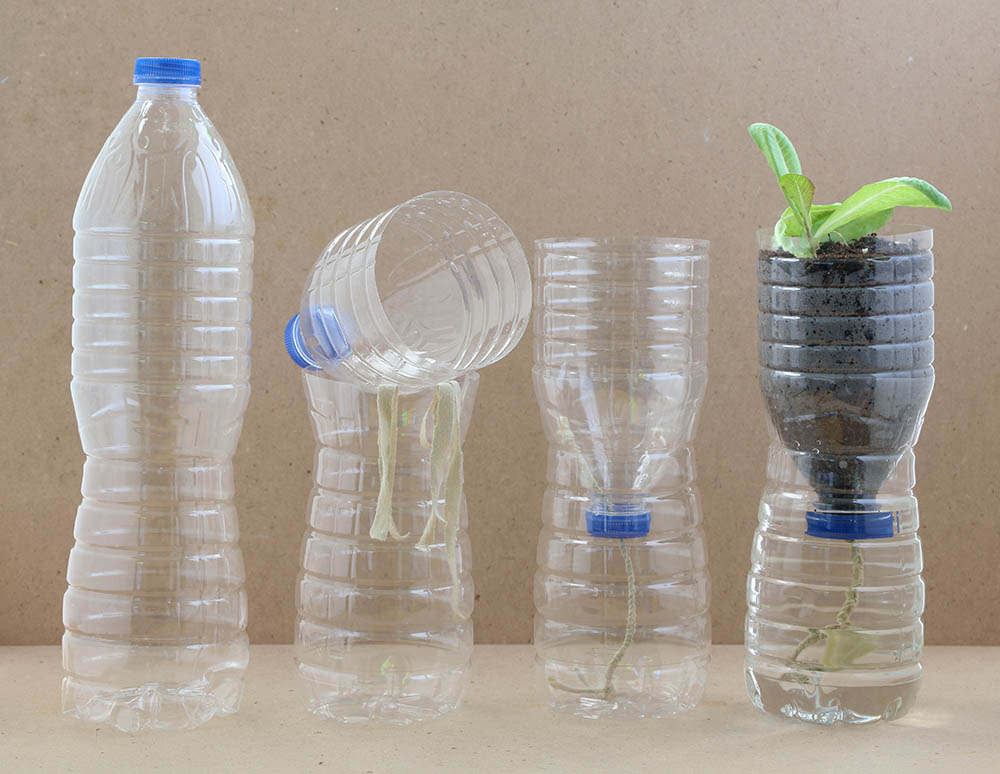How Do Self-Watering Pots Work? Steps, Benefits, Drawbacks, & FAQ
-

- Last updated:

Self-watering pots come in various sizes, styles, and price ranges. Irrespective of your choice, these containers help remove the guesswork when watering your houseplants. They can help you avoid common blunders of giving your leafy friends too much or too little water.
Have you ever heard that plants like their feet wet but their ankles dry?
Self-watering pots provide sub-irrigation and direct the water to a plant’s roots. This helps to maintain consistent moisture without necessarily oversaturating the soil. The planters ensure the plant receives just the right amount of water for optimal health and yield.
What Is a Self-Watering Pot?
A self-watering pot or planter is a container uniquely designed to provide a source of moisture for your house plants. It makes plant maintenance easier by eliminating the need for you to maintain a watering schedule.
The market is rich with different planter designs from various brands. However, all designs generally work the same and have the following main features:
- Planting container
- Water reservoir
- Fill tube
- Overflow spout and drainage plug
- Wicking mechanism
- Water level indicator
Generally, the size of the planting container will also dictate the water reservoir’s size. Some planters have bottom containers big enough to contain up to five gallons of water. You should choose a self-watering planter based on your type of plant, its size, and watering needs.
Not all planters have a water level indicator, although this is a convenient feature. It allows you to monitor the amount of water in the reservoir and do a refill whenever necessary. You should refill the water when it is low, not when your reservoir dries up entirely.

How Self-Watering Planters Work
Your plants need a consistent supply of water to thrive. Unfortunately, forgetting to water your plants as often as you should is easy. And don’t forget, plants growing in containers need more consistent watering because they dry out faster than their counterparts on the ground.
A self-watering pot must be filled every two to six weeks, depending on its capacity. It waters the plants from the roots instead of the top (sub-irrigation), reducing the risk of leaf and flower damage. Sub-irrigation also helps with fungus and disease control by ensuring the soil is not oversaturated.
The transpiration process involves plants absorbing water via their roots and channeling it to other parts using capillary action. Therefore, the roots need to be in constant contact with water for other parts, including the stem, leaves, and flowers, to be healthy.
These unique planters provide a water reservoir at the bottom, allowing your plants to drink only as much as they need. They replicate the natural system of plants drawing water from deep in the soil even when the top soil is dry.
Investing in a self-watering container is worth it because it gives your plants access to a water reservoir. They also gain better control over their transpiration rate and can drink less water on cool days and more during hot, dry days. This saves you from guessing how much water your plants need based on the changing environmental or climatic conditions.
How to Set Up Your Self-Watering Pot
Setting up a self-watering planter is simple, although taking the proper steps to avoid damaging your plants is essential. Here is what you need to do:
- Read the guide for your self-watering system and install the parts as instructed.
- Put a quality potting mix into the planter and preferably use a product known for having a moisture control material like peat. It will hold a reasonable amount of moisture, although it will give it back to the roots when the plant needs a drink.
- If your planter has a wick system, drop one or both ends (depending on your product’s instructions) into the water reservoir. If it does not feature a wick system, you must squeeze the potting mix into the depressions at your planter’s bottom. This will create an effective wicking mechanism for your plants.
- Place your plant into the self-watering container and gently press the topsoil to ensure your leafy buddy is firm and well-supported. Water the plant from above to allow the potting mix to settle, and add more potting mix if necessary. Typically, the wicking mechanism will not work if you use a dry potting mix. This is likely the only time that necessitates watering your plant from above.
- Allow the water poured from the top to penetrate the potting mix and drain into the reservoir if it is excessive. You can then fill the reservoir to the brim and refill it when the water level drops.

The 3 Advantages of Using Self-Watering Pots
To keep your plants happy, you must maintain a consistent watering schedule. It’s challenging to predict the perfect transpiration rate of plants, mainly because it constantly shifts based on environmental factors. Fortunately, self-watering pots can make things easier for you.
The following are three compelling benefits that these pots offer.
1. They Simplify Plant Maintenance
Plant maintenance is challenging, especially when you must constantly water your plants. Self-watering pots allow you to take breaks for several weeks before you need to add more water to the reservoir. This makes plant maintenance easier, allowing you to travel without feeling guilty about overwatering your plants before leaving.
2. Your Plants Get a Consistent Supply of Water
Plants thrive best when they have a consistent water supply. “Consistent” means they receive as much or as little water as they need based on the temperatures, light, and humidity, among other environmental factors.
It’s hard and sometimes impossible for plant parents to provide a “consistent” water supply. One week you are busy and neglect your watering routine, and the following week you give your plants an “extra drink” to compensate for the dry spell. When you can keep up with your watering schedule, the environmental conditions change, and suddenly the soil is oversaturated.
Self-watering planters can help remove the guesswork from the equation. They work by ensuring that plants absorb just the right amount of hydration depending on their transpiration rates during different days.
3. They Provide Effective Pest and Disease Control
Self-watering planters feature a fill tube through which you pour water into the reservoir. The opening is small, and some pots come with fill tube caps to keep pests and debris off. Also, top-quality planters have an overflow mechanism that ensures the plant roots don’t sit in water and rot over time.
Moreover, self-watering pots provide sub-irrigation, meaning the topsoil does not get too moist. This deters pests, fungus, algae, and microbes that cause diseases. While monitoring your pots periodically is necessary, high-quality self-watering containers do as advertised and generally simplify plant maintenance.

The Drawbacks of Using Self-Watering Pots
Before you invest in self-watering planters, you also need to know about the potential drawbacks to expect. The following are some disadvantages that you should be aware of.
Not Ideal for Large Plants
Large plants often feature long and intricate root systems. The roots of such plants will find their way into the reservoir, and plant roots are prone to rotting when they sit in water.
Costlier Than Regular Plant Pots
Another disadvantage of self-watering planters is that they cost more than standard plant containers. The additional parts like the fill tube, wick mechanism, and water reservoir justify the steeper pricing. However, you need to consider the costs if you have many plants and want to switch to self-watering pots.
Some Plant Maintenance Is Still Necessary
Self-watering planters do not make your plants entirely maintenance-free. They only provide a convenient watering system, making it unnecessary for you to water your plants daily. The planters have a water reservoir at the bottom that allows a plant to absorb water through the soil foot or fabric wick system.
Unfortunately, you still have some work to do as a plant parent even after investing in a self-watering pot. Your plants will still need routine monitoring and fertilizer applications. Moreover, you must keep an eye on the reservoir’s water level and refill it before it dries.
FAQs: Self-Watering Pots
The following are some common questions asked by many indoor plant lovers.
1. How Do I Go About Fertilizer Application When Using Self-Watering Containers?
When using a self-watering pot, it’s always better to use slow-release or liquid fertilizers. Just add the fertilizer into the water and dilute it properly. Your plants will absorb it with the water in the reservoir. Even so, you must beware of the potential for mineral salt concentration in the potting mixture. To be safe, use a potting mix with plenty of compost.
2. Should I Worry About Root Rot When Using Self-Watering Planters?
Whether you should worry about root rot will highly depend on the design of your self-watering planters. A quality container will also feature an overflowing system to ensure the soil retains just enough moisture. This also eliminates the risk of fungal growth.
3. How Frequently Should I Clean the Water Reservoir?
Generally, the water reservoir does not need frequent cleaning, and it’s perfectly okay to give it some attention only when winterizing your plants. Cleaning the reservoir helps to remove clogs that can mess with the functions of the wicking mechanism. Also, the reservoir should remain dry during winter because any water that freezes inside can make it crack.
4. Are There Different Types of Self-Watering Pots?
Yes. There are two types of self-watering containers with slight differences in their design. One of the designs only features a water saucer at the bottom. You can also find designs that come with a tube, although both pots function similarly. You only need to refill the water chamber whenever it runs low; everything else will work automatically.
5. Should I Worry About Mosquito Infestation When Using Self-Watering Planters?
Depending on where you live, mosquitoes can find the perfect breeding grounds in the water in the saucers of your self-watering pots. Mosquito infestations are, however, mainly a problem when you use self-watering planters outdoors.
Cover the water reservoirs with a plant-friendly waterproof adhesive if your indoor planters attract insects. Alternatively, invest in a planter design with the reservoir area sealed off. If the fill tube has no cap, you can easily cover it with a pest mesh.
Final Thoughts
Houseplants rely primarily on their human caregivers for proper positioning to get adequate sunshine, pest management, nutrient and fertilizer application, and watering. While you only need to do most of these chores once in a while, your plants need a consistent water supply to survive and thrive.
Self-watering pots can offer the best solutions if you travel a lot, have busy work-life schedules, or have no idea how much water your leafy friends need. Generally, these containers allow your plants to water themselves and absorb as much or as little water as they need.
Featured Image Credit: Olya Detry, Shutterstock
Contents


